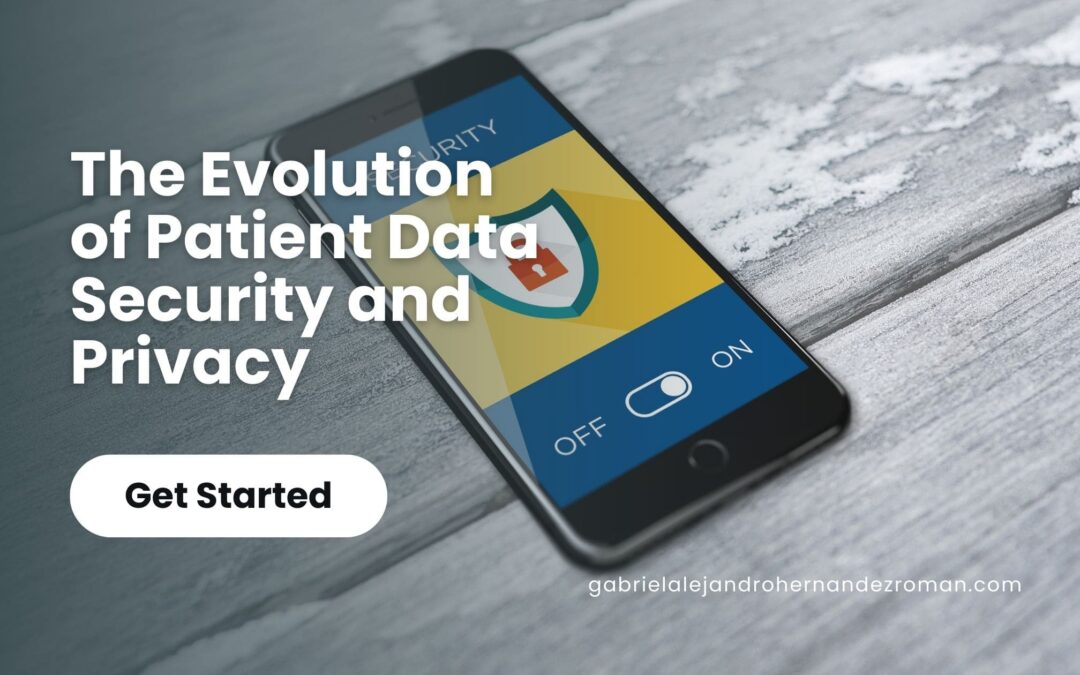Patient data security and privacy have become critical concerns in the modern healthcare landscape. As technology advances and electronic health records (EHRs) become more prevalent, protecting patient information has become increasingly complex and vital. The evolution of patient data security and privacy reflects the growing need to safeguard sensitive health information while balancing technological innovation and regulatory requirements.
Historically, patient data security focused on physical protection, with paper records stored in locked cabinets and access restricted to authorized personnel. However, the shift to digital records and online systems has introduced new challenges and opportunities for data security. Electronic health records, telemedicine, and other digital tools have streamlined healthcare processes and improved patient care, but they have also increased the risk of data breaches and unauthorized access.
One significant advancement in patient data security is the implementation of robust encryption techniques. Encryption transforms data into a coded format that can only be decrypted by authorized users with the correct decryption key. This technology ensures that patient information remains confidential even if it is intercepted or accessed without permission. Encryption is now a standard practice for protecting data transmitted over networks, stored in databases, and used in various healthcare applications.
Another key development is the introduction of advanced authentication and access control measures. Multi-factor authentication (MFA) requires users to provide multiple forms of verification, such as a password and a biometric scan, to access sensitive information. This additional layer of security reduces the risk of unauthorized access and ensures that only verified individuals can view or modify patient data. Role-based access control (RBAC) further enhances security by granting access based on user roles and responsibilities, limiting exposure to sensitive information.
The regulatory landscape has also evolved to address patient data security and privacy. The Health Insurance Portability and Accountability Act (HIPAA) in the United States set forth stringent requirements for protecting patient information and ensuring privacy. HIPAA mandates that healthcare organizations implement safeguards to protect electronic health records, including administrative, physical, and technical measures. Compliance with HIPAA and similar regulations is essential for maintaining patient trust and avoiding legal repercussions.
Data breach detection and response have become critical components of patient data security. Implementing real-time monitoring systems can help identify and address potential security threats promptly. Incident response plans outline procedures for managing data breaches, including notifying affected individuals, assessing the impact, and mitigating damage. Regular security audits and vulnerability assessments help organizations stay ahead of emerging threats and ensure ongoing compliance with data protection standards.
Patient empowerment and transparency are also gaining importance in data security and privacy. Patients are increasingly seeking control over their health information and how it is used. Providing clear communication about data protection practices, obtaining informed consent, and offering options for data sharing and access can enhance patient trust and engagement. Additionally, patient portals and secure communication channels enable individuals to review their records and communicate with healthcare providers while maintaining data security.
In conclusion, the evolution of patient data security and privacy reflects the growing complexity of managing sensitive health information in a digital age. Advancements in encryption, authentication, regulatory compliance, and breach response are crucial for protecting patient data. By prioritizing security and transparency, healthcare organizations can safeguard patient information, maintain trust, and navigate the challenges of an ever-evolving technological landscape.

